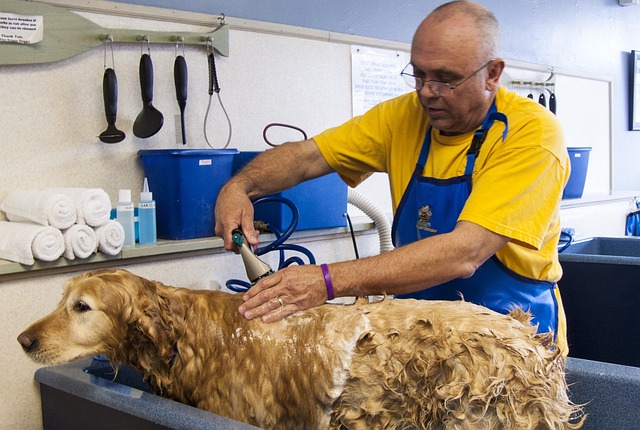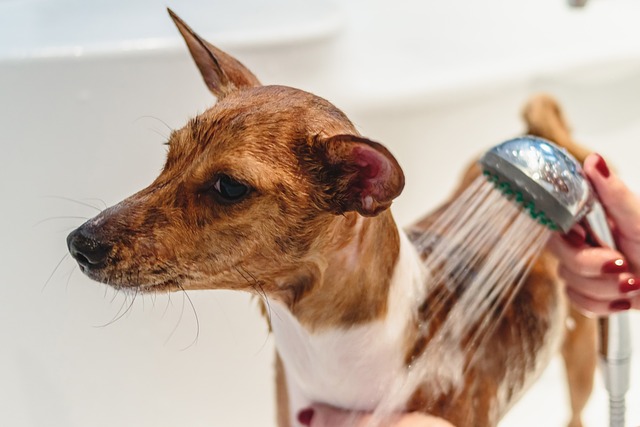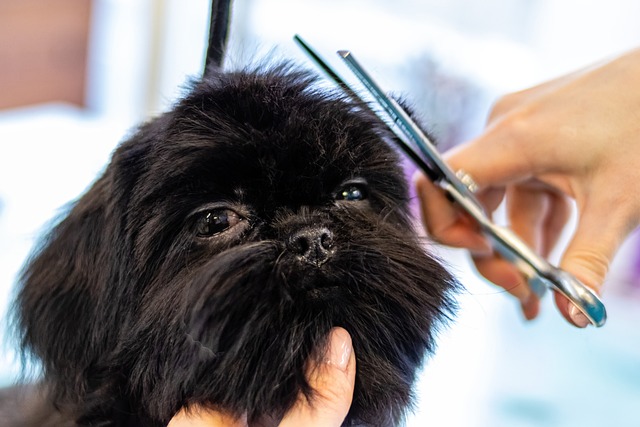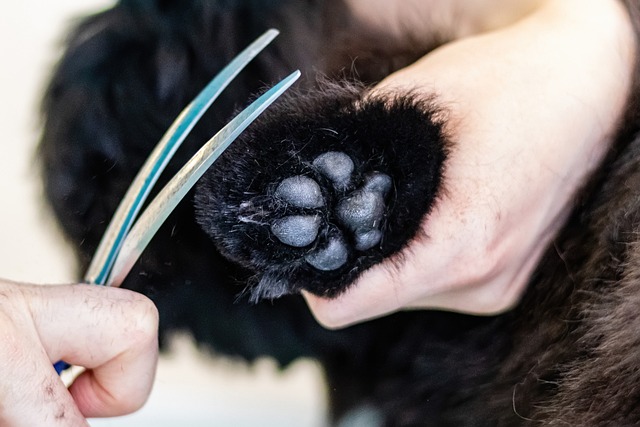The Value of Routine Dog Grooming
We’re talking dog grooming advice today!
By rolling on the ground, licking their fur, and chewing their coats, our furry pals keep their coats clean. They require our assistance despite their best efforts to maintain their cleanliness.
You’ve come to the right place if you’ve never groomed a pet. With the help of these ten dog grooming suggestions, you can establish a regimen at home that you and your dog will both love.
10 Dog Grooming Advice from a Professional Groomer for Pet Owners

Wash the Coat
Brush your dog’s coat thoroughly to maintain it tidy and lustrous. The dirt, mats, and dead hair will all be removed by brushing. No matter the breed, dogs require routine brushing with a comb or brush to maintain healthy hair.
The only distinction is that the length and texture of the dog’s coat influence how often the dog should be brushed.
Dogs like Boxers who have short, sleek hair may only require brushing once each week. To get rid of the debris and dead skin, use a rubber brush. After that, you can brush any remaining hair with a bristle brush.
Use a slicker brush to brush your puppy once a week if it has short, dense fur that is prone to matting (like a retriever). It will aid in detangling the hair, and you can then use a bristle brush to remove any dead hair that remains.
You’ll need to brush your dog every day if it has a lengthy coat like a Yorkie. Before using a bristle brush, use a slicker brush to get rid of tangles and stop matting.
Having a bath:

To avoid odour and hygiene problems, most dogs require bathing every few months. If your pet spends a lot of time outside or has skin conditions, it may require baths more frequently. In other instances, giving your dog more frequent baths than is advised will dry up the skin and remove the coat’s natural oils.
Give your dog a thorough brushing before bathing to get rid of mats and all dead hair. Put the dog in the tub or sink after it has been filled with four inches of warm water. Pour warm water over your dog using a plastic pitcher, cup, or spray hose.
Aim to avoid getting water in the dog’s eyes, ears, or nose while spraying or pouring it. Use big cotton balls to put in your dog’s ears until the bath is over if you want to be extra cautious.
Carefully clean the dog’s face of any filth using just water and the washcloth.
From head to tail, gently massage the shampoo into the coat. Again, exercise caution and stay away from your dog’s mouth, ears, and eyes. Rinse the shampoo off and do it again if necessary. Dry your pet thoroughly with a towel, or if it’s chilly, use the coolest settings on a blow dryer.
Prior to your grooming session, make sure your dog is completely dry because partially dried coats might curl more and be more challenging to trim.
Selection of a Shampoo
Use a shampoo designed specifically for canines. Dogs’ skin has a different PH level than people’, therefore using human shampoo can irritate your pet’s skin even if it’s not hazardous for pets.
Shampoos with an oatmeal base are typically the best choice. If necessary, you can also use medicated, hypoallergenic, or flea shampoo.
In order to lessen matting, you can also use a conditioner designed for dogs with sensitive skin and dry, brittle hair.
Kit for grooming dogs

Our expert dog grooming advice would be to spend money on high-quality dog brushes, trimmers, and scissors if you intend to perform the grooming yourself. When you work with them, you’ll notice the difference, and they’ll stay longer. Always clean, lubricate, and sharpen your dog grooming kit as needed to keep it in good condition.
You’ll need a couple clippers and blades—differently numbered from human clipper blades—to trim your dog’s coat. Utilize blades #5, #7, #9, or #10 for a shorter cut. Use the cuts with the numbers #5 (or #8), #3, or #4 for longer cuts.
Make certain that the blades you use are FC (final cut) or another appropriate designation. These blades are less sharp and feature teeth that are slightly more widely spaced than skip tooth blades. Use a #10 blade just on the region around the eyes, the sanitary area, and the armpits.
Rapid health assessment
You may always look to see if something is wrong while brushing your dog. In this manner, you can identify any growths or skin conditions before they cause harm. To quickly assess the dog’s health, run your fingers through its coat.
By splitting the coat, you can get a better look and check the skin for redness, rashes, bald areas, lumps, or parasite infestations.
Sort the grooming supplies.
Organize your grooming supplies and keep them in one location that is easy to get to when you need to use them. The process will go more smoothly if you have everything ready, including shampoo, brushes, trimmers, and scissors (and your dog will be less likely to run away from the grooming if he doesn’t enjoy it).
An Additional Set of Hands
Another helpful dog grooming tip and technique is to purchase a Groomers Helper device if your dog won’t stay still while drying and being groomed. You can use it to steady the dog and prevent it from spinning and writhing.
The grooming will go more quickly and smoothly in this approach. You can always ask a friend or member of your family for extra assistance if purchasing a Groomers Helper device is out of your price range.
Ears
Checking your ears should be a frequent part of grooming. If your dog’s inner ears are filthy, clean them with a cotton ball, piece of gauze, or liquid ear cleanser manufactured specifically for dogs that has been moistened with hydrogen peroxide, mineral oil, or both.
Fold your pet’s ear gently and wipe out any earwax and dirt while you do this. Make sure to pull the earwax and dirt out of the ear rather than rubbing it in.
It’s time to cut your dog’s nails if they are catching or clicking on the floor. Dog nails should generally be cut when they are about to touch the ground while walking. While some dogs can wait longer between nail trimmings, some may require a weekly pedicure.
Dog nail cutters come in two basic varieties: scissor-style and guillotine-style. Both are effective, so pick the one that best fits your needs.

Since the hind paws are less sensitive, start with them. Cut the nail’s tip at a 45-degree angle while maintaining a strong grip on the paw. You can make a single, huge incision or several smaller ones, but you should never cut too deeply. Up until you notice the teeny black dot in the center, surrounded by white, it’s okay to trim the dog’s nails.
Teeth
Brush your dog’s teeth frequently and give them lots of chew toys to keep their mouths healthy. These will provide you healthy teeth and gums in addition to a wholesome diet.
How frequently ought one to brush the teeth of a dog?
For optimal results, do it twice to three times each week.
Utilize only canine-specific toothpaste. Dogs’ stomachs may become irritated by human toothpaste. Additionally, there are canine and feline-specific toothbrushes. They have gentler bristles and are smaller than human toothbrushes.
By elevating the lip as necessary, work on one part of your dog’s mouth at a time. Make tiny, circular strokes while cleaning the teeth at a 45-degree angle. The side of the tooth closest to the cheek typically has the most tartar. You can get rid of it by giving it one last downward stroke.

